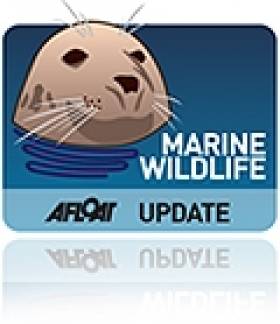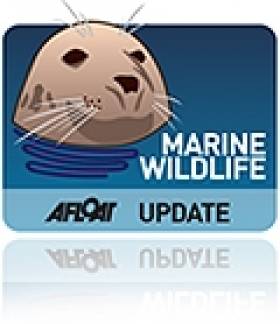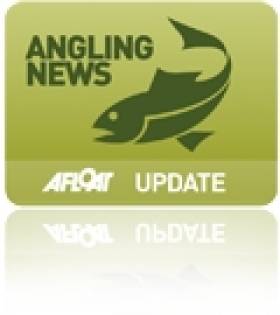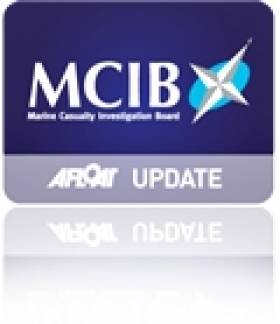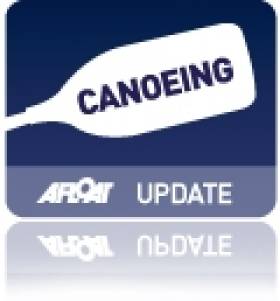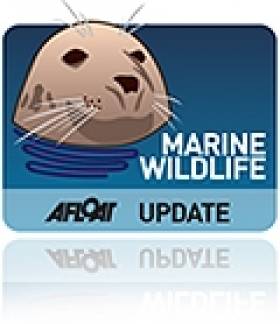Displaying items by tag: Co Wexford
NI Coastguard Rescues Dog From Sea Cliff Ledge
#AnimalRescue - Northern Ireland coastguard teams raced to the aid of a dog trapped on a cliff ledge in Co Down earlier this week.
As the Belfast Telegraph reports, eight coastguard volunteers fought their way across boggy ground to reach the terrier that had slipped down the cliff from the Ballyhornan Coastal Path.
But once on the scene, a winch was quickly set up to rescue the petrified pooch and return him to his owners.
A rescue of a different kind was celebrated in Co Wexford in recent days after a loggerhead turtle washed up in Kilmore Quay over the Christmas period.
According to the Wexford People, the turtle – of a species used to much warmer waters – was named Ninja by staff at the Seal Rescue Ireland sanctuary who nursed her back to health after she beached alive just before Christmas.
A second turtle found over the same period at Ballyhealy Beach sadly died.
"Ninja was our first turtle in the centre and we were extremely happy with her progress," said manager Meadow Greenwood. "Our fingers are still crossed for a full recovery and final ending of release."
Ninja has since been transferred to the longer-term marine wildlife care facilities at Galway Atlantaquaria.
Humpback Whales A Surprise April Sighting Off West Cork
#MARINE WILDLIFE - At least two humpback whales have been spotted by birdwatchers off Galley Head in West Cork, according to the Irish Whale and Dolphin Group (IWDG).
"This is the first time since the large whale project commenced in 1999 that humpback whales have been recorded along the Irish south or coast during April, which has been up till now the one month in which large whales have consistently been absent from our inshore waters," said IWDG sightings co-ordinator Pádraig Whooley.
The timing of this sighting was described by Whooley as "unusual". He also confirmed that one of the whales was recorded off Hook Head in Co Wexford in late January and early February of this year, which dispells the hypothesis that large whales leave Irish waters after the herring season in the southeast.
Meanwhile, Whooley sounded a word of caution for anyone hoping to spot the humpbacks for themselves, as the "sheer numbers of basking sharks about" often result in false sightings.
The Irish Whale and Dolphin Group has more on the story, including images, HERE.
Fin Whale 'Feeding Frenzy' Off Hook Head
#MARINE WILDLIFE - A "feeding frenzy" involving a pod of fin whales was spotted off Hook Head in Co Wexford last week, The Irish Times reports.
And according to Andrew Malcolm of the Irish Whale and Dolphin Group (IWDG), two of the whales were in the same location almost exactly a year ago.
Malcolm, who was with a group on board the Rebecca C, used photographs of the whale's dorsal fins to compare records for the confirmation.
The pod of six fin whales was seen feeding some 3km southeast of Hook Head, attracted by the herring spawning grounds in the area.
More than 30 other cetaceans, including common dolphins, porpoises and a minke whale, were sighted on the trip.
The Irish Times has more on the story HERE.
Dead Seals Washed Up at Fethard-on-Sea
#MARINE WILDLIFE - The Gorey Guardian reports that the bodies of two grey seals were found washed up last week on Booley Bay beach, near Fethard-on-Sea in Co Wexford.
The two seal pups were found in an emaciated and malnourished state by a beach walker on 27 November.
According to Irish Whale and Dolphin Group chair Kevin MacCormick, dead seal strandings are not unusual at this time of year, particularly after stormy weather, and grey seals have an especially high mortality rate.
Tramua wounds and blood found on the seals were put down to predation by seabirds.
Wexford To Host Winter Shore Angling Festival in January
#ANGLING - The 24th Winter Shore Angling Festival will be hosted on Co Wexford's east-facing beaches from 26-28 January, the Gorey Guardian reports.
Ireland's Dave Roe will be aiming to repeat his winning effort last year in a strong field of contenders that will also include UK match angling greats Alan Yates and Chris Clarke.
Codling, whiting, dab, coalfish and rockling will be the top catches over the weekend competition, which last year had a total prize fund of more than €8,000.
And even those not competing will get a lot out of watching the best match anglers using the latest equipment and techniques to gain the edge over their opponents.
The festival entry fee is €150 and includes a presentation dinner. For further details and entry information, contact Warren Doyle at 086 806 9961 (evenings only) or [email protected].
The Gorey Guardian has more on the story HERE.
MCIB Highlights Danger of Fishing Without Safety Gear
The Marine Casualty Investigation Board (MCIB) has called on the Government to continue highlighting the dangers of operating boats without adequate safety equipment, following its report into the death of a Wexford fisherman last year.
Michael O'Connor drowned after going overboard from his small open boat while fishing alone at Cullenstown, Co Wexford in the early hours of 7 September 2010.
The local Irish Coast Guard unit initiated a search when he did not return as expected later in the morning. His body was subsequently located next to his upturned boat around 9am.
It is not known to investigators how O'Connor came to be in the water when the incident occurred. He was found to be wearing a lifejacket, but no flares, VHF radio or other safety equipment were found on board his vessel.
The boat itself was also not a registered fishing vessel, and was unsuitable for carrying the fishing gear O'Connor had been using.
The report stated: "The combination of boat size, darkness, weather conditions, tidal flow, fishing equipment and the absence of safety equipment other than a lifejacket combined to increase the danger and reduce the chance of survival."
The full report is available to download as a PDF from the MCIB website HERE.
The Sea Road Casts Off With Trip to Saltee Islands
The first in a new series, The Sea Road, following classic Irish sea kayaking routes in The Irish Times takes Gary Quinn to the Saltee Islands.
Setting out from Kilmore Quay in Co Wexford in a group of seven, the forecast of four four winds with rain, fog and thunderstorms is concerning, but not enough to hold Quinn back. And when they finally pierce the fog to land on Little Saltee, it's all worth it.
"The fog lifts, the sun breaks through and, stepping up off the beach, a carpet of bluebells appears to bloom, almost before our eyes," writes Quinn.
The Irish Times has more on Gary Quinn's Saltee Islands visit HERE.
Wexford Lighthouse Could Be a Dream Home
A private lighthouse overlooking Waterford Harbour will be up for auction in June valued at €345,000.
The Duncannon north lighthouse - some 20km from New Ross, Co Wexford - is thought to be one of the only privately-owned lighthouses still operating in Ireland, according to The Irish Times.
The protected building was restored into use some years ago, and receives an annual rent of €2,500 from the Port of Waterford as a backup lighthouse.
The living quarters comprise two living rooms, a kitchen with "a rustic, cottagey feel", a study with a bay view, a bathroom with bath and shower, and three bedrooms (including two doubles).
Some work may be required by prospective owners - low ceilings in the double bedrooms could be raised "significantly", the main rooms may need a new lick of paint, and the sloping garden is unwalled at the cliff edge.
But the property, which also includes a number of outhouses, has all the potential to be a quirky dream home.
The Duncannon north lighthouse will go under the hammer on 17 June 2011, with New Ross agency PN O’Gorman quoting an AMV of €350,000.
Dirty Dunes a Danger Says Coastwatch
Coastwatch has claimed that a ministerial order for the protection of sand dunes in Co Wexford is being breached, The Irish Times reports.
The order was made in January by former environment minister John Gormley to protect the Tinnaberna dunes from damage due to the storage of cattle over a number of years.
But the environmental group says that "dung, contaminated sediment and massive weed cultures remain" on site, and highlighted concern over its close proximity to a stream which flows into the sea near bathing water.
However, the National Parks and Wildlife service said its ecologist is "happy" with progress made on clearing the dunes.
The Irish Times has more on the story HERE.
Stunning Images of Feeding Fin Whales
The Irish Times has stunning photographs of fin whales and dolphins feeding off Hook Head in Co Wexford captured by animal wildlife photographer George Karbus.
Czech-born Lahinch resident Karbus, who specialises in wildlife photography, said: “It is really hard to capture images of fin whales because they move incredibly fast, so to see them together feeding in one place was amazing and I was able to get some special images.”
Meanwhile, the Irish Whale and Dolphin Group has released its first study on the ecology of fin whales in Irish waters.
Using the photo identification catalogue collected by the group since 2001, some 62 individual fin whales were identified - 11 of them being return visitors.


























